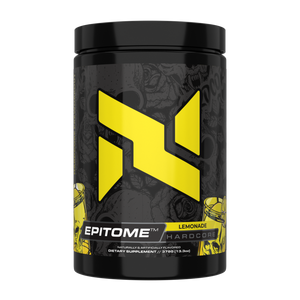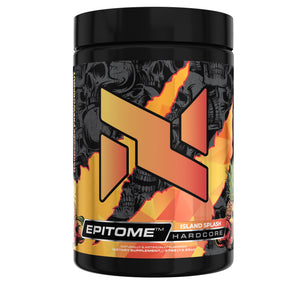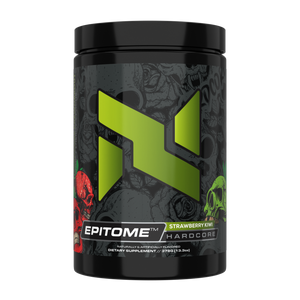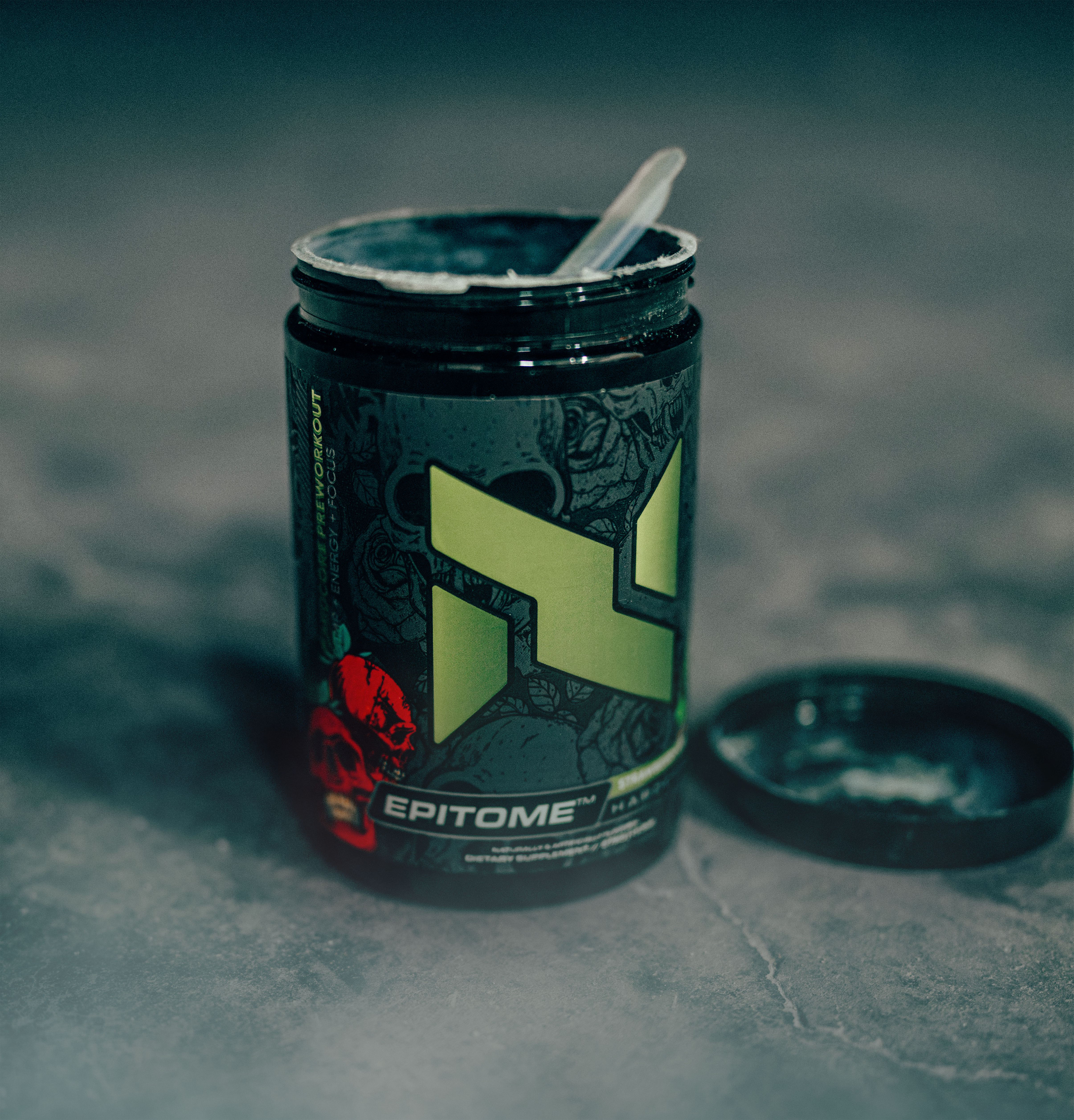Your Cart is Empty







Epitome Hardcore
Elevate your workout with explosive power, unparalleled energy, and skin-tearing pumps.
- Clinically Dosed Performance.
- Explosive Energy & Focus.
- Zero Fillers, Pure Ingredients.
- Nutrition Label
- References x
Vitamin B6
- Clayton, P. T. (2006). B 6-responsive disorders: a model of vitamin dependency. Journal of inherited metabolic disease, 29(2-3), 317-326.
- Allgood, V. E., & Cidlowski, J. A. (1992). Vitamin B6 modulates transcriptional activation by multiple members of the steroid hormone receptor superfamily. Journal of Biological Chemistry, 267(6), 3819-3824.
Vitamin B3
- Mach, J., Midgley, A. W., Dank, S., Grant, R. S., & Bentley, D. J. (2010). The effect of antioxidant supplementation on fatigue during exercise: potential role for NAD+ (H). Nutrients, 2(3), 319-329.
- Sauve, A. A. (2008). NAD+ and vitamin B3: from metabolism to therapies. Journal of Pharmacology and Experimental Therapeutics, 324(3), 883-893.
- Kaplon, R. E., Gano, L. B., & Seals, D. R. (2014). Vascular endothelial function and oxidative stress are related to dietary niacin intake among healthy middle-aged and older adults. Journal of applied physiology, 116(2), 156-163.
Beta-Alanine
- Miyaji, T., Sato, M., Maemura, H., Takahata, Y., & Morimatsu, F. (2012). Expression profiles of carnosine synthesis–related genes in mice after ingestion of carnosine or β-alanine. Journal of the International Society of Sports Nutrition, 9(1), 15.
- Kern, B. D., & Robinson, T. L. (2011). Effects of β-alanine supplementation on performance and body composition in collegiate wrestlers and football players. The Journal of Strength & Conditioning Research, 25(7), 1804-1815.
- Stout, J. R., Cramer, J. T., Zoeller, R. F., Torok, D., Costa, P., Hoffman, J. R., ... & O’kroy, J. (2007). Effects of β-alanine supplementation on the onset of neuromuscular fatigue and ventilatory threshold in women. Amino acids, 32(3), 381-386.
L-Citrulline
- Pérez-Guisado, J., & Jakeman, P. M. (2010). Citrulline malate enhances athletic anaerobic performance and relieves muscle soreness. The Journal of Strength & Conditioning Research, 24(5), 1215-1222.
- Wax, B., Kavazis, A. N., Weldon, K., & Sperlak, J. (2015). Effects of supplemental citrulline malate ingestion during repeated bouts of lower-body exercise in advanced weightlifters. The Journal of Strength & Conditioning Research, 29(3), 786-792.
- Ochiai, M., Hayashi, T., Morita, M., Ina, K., Maeda, M., Watanabe, F., & Morishita, K. (2012). Short-term effects of L-citrulline supplementation on arterial stiffness in middle-aged men. International journal of cardiology, 155(2), 257-261.
- Glenn, J. M., Gray, M., Wethington, L. N., Stone, M. S., Stewart, R. W., & Moyen, N. E. (2017). Acute citrulline malate supplementation improves upper-and lower-body submaximal weightlifting exercise performance in resistance-trained females. European journal of nutrition, 56(2), 775-784.
Betaine Anhydrous
- Schwab, U., Alfthan, G., Aro, A., & Uusitupa, M. (2011). Long-term effect of betaine on risk factors associated with the metabolic syndrome in healthy subjects. European journal of clinical nutrition, 65(1), 70-76.
- Trepanowski, J. F., Farney, T. M., Mccarthy, C. G., Schilling, B. K., Craig, S. A., & Bloomer, R. J. (2011). The effects of chronic betaine supplementation on exercise performance, skeletal muscle oxygen saturation and associated biochemical parameters in resistance trained men. The Journal of Strength & Conditioning Research, 25(12), 3461-3471.
- Armstrong, L. E., Casa, D. J., Roti, M. W., Lee, E. C., Craig, S. A., Sutherland, J. W., ... & Maresh, C. M. (2008). Influence of betaine consumption on strenuous running and sprinting in a hot environment. The Journal of Strength & Conditioning Research, 22(3), 851-860.
Nitrosigine
- Rogers, J. M., Gills, J., & Gray, M. (2020). Acute effects of Nitrosigine® and citrulline maleate on vasodilation. Journal of the International Society of Sports Nutrition, 17(1), 1-8.
- Rogers, J., Gills, J., & Gray, M. Comparing the Acute Effects of Citrulline Malate and Nitrosigine Supplementation in Young Adults.
L-Tyrosine
- Banderet, L. E., & Lieberman, H. R. (1989). Treatment with tyrosine, a neurotransmitter precursor, reduces environmental stress in humans. Brain research bulletin, 22(4), 759-762.
- Fernstrom, J. D., & Fernstrom, M. H. (2007). Tyrosine, phenylalanine, and catecholamine synthesis and function in the brain. The Journal of nutrition, 137(6), 1539S-1547S.
- Lehnert, H., & Wurtman, R. J. (1993). Amino acid control of neurotransmitter synthesis and release: physiological and clinical implications. Psychotherapy and psychosomatics, 60(1), 18-32.
- Neri, D. F., Wiegmann, D., Stanny, R. R., Shappell, S. A., McCardie, A., & McKay, D. L. (1995). The effects of tyrosine on cognitive performance during extended wakefulness. Aviation, space, and environmental medicine.
Alpha-GPC
- Ziegenfuss, T., Landis, J., & Hofheins, J. (2008). Acute supplementation with alpha-glycerylphosphorylcholine augments growth hormone response to, and peak force production during, resistance exercise. Journal of the International Society of Sports Nutrition, 5(S1), P15.
- Khosrow Tayebati, S., Tomassoni, D., Ejike Nwankwo, I., Di Stefano, A., Sozio, P., Serafina Cerasa, L., & Amenta, F. (2013). Modulation of monoaminergic transporters by choline-containing phospholipids in rat brain. CNS & Neurological Disorders-Drug Targets (Formerly Current Drug Targets-CNS & Neurological Disorders), 12(1), 94-103.
- Gatti, G., Barzaghi, N., Acuto, G., Abbiati, G., Fossati, T., & Perucca, E. (1992). A comparative study of free plasma choline levels following intramuscular administration of L-alpha-glycerylphosphorylcholine and citicoline in normal volunteers. International journal of clinical pharmacology, therapy, and toxicology, 30(9), 331-335.
Caffeine Anhydrous
- Norager, C. B., Jensen, M. B., Weimann, A., & Madsen, M. R. (2006). Metabolic effects of caffeine ingestion and physical work in 75‐year old citizens. A randomized, double‐blind, placebo‐controlled, cross‐over study. Clinical endocrinology, 65(2), 223-228.
- Desbrow, B., Biddulph, C., Devlin, B., Grant, G. D., Anoopkumar-Dukie, S., & Leveritt, M. D. (2012). The effects of different doses of caffeine on endurance cycling time trial performance. Journal of sports sciences, 30(2), 115-120.
- Mora-Rodríguez, R., Pallarés, J. G., López-Samanes, Á., Ortega, J. F., & Fernández-Elías, V. E. (2012). Caffeine ingestion reverses the circadian rhythm effects on neuromuscular performance in highly resistance-trained men. PLoS One, 7(4), e33807.
- Paton, C. D., Lowe, T., & Irvine, A. (2010). Caffeinated chewing gum increases repeated sprint performance and augments increases in testosterone in competitive cyclists. European journal of applied physiology, 110(6), 1243-1250.
N-Phenethyl Dimethylamine Citrate
- Hedman, K., Leander, K., & Luning, B. (1969). STUDIES ON ORCHIDACEAE ALKALOIDS. 15. PHENETHYLAMINES FROM ERIA-JARENSIS AMES. ACTA CHEMICA SCANDINAVICA, 23(9), 3261.
Rauwolfia Vomitoria
- Perry, B. D., & U'Prichard, D. C. (1981). [3H] Rauwolscine (α-yohimbine): a specific antagonist radioligand for brain α2-adrenergic receptors. European journal of pharmacology, 76(4), 461-464.
- Rockhold, R. W., & Gross, F. (1981). Yohimbine diastereoisomers: Cardiovascular effects after central and peripheral application in the rat. Naunyn-Schmiedeberg's archives of pharmacology, 315(3), 227-231.
Huperzia Serrata
- Boudinot, E., Taysse, L., Daulon, S., Chatonnet, A., Champagnat, J., & Foutz, A. S. (2005). Effects of acetylcholinesterase and butyrylcholinesterase inhibition on breathing in mice adapted or not to reduced acetylcholinesterase. Pharmacology biochemistry and behavior, 80(1), 53-61.










